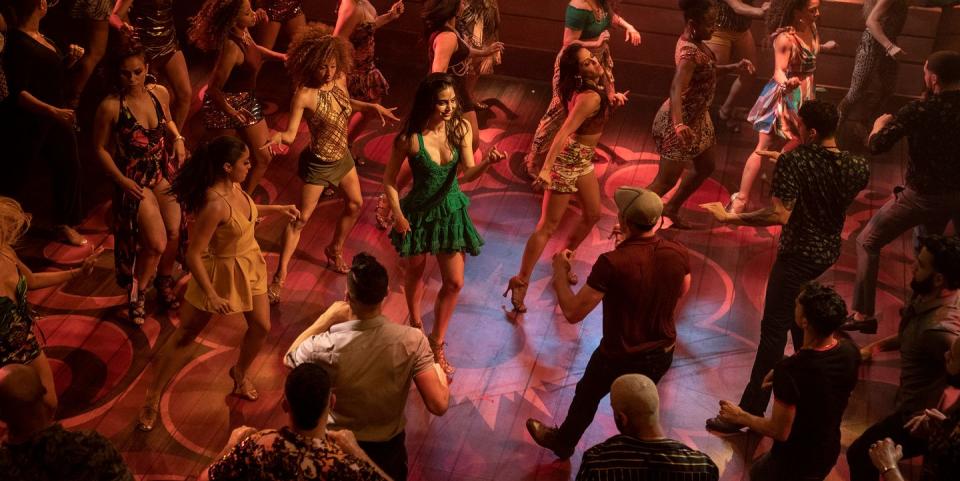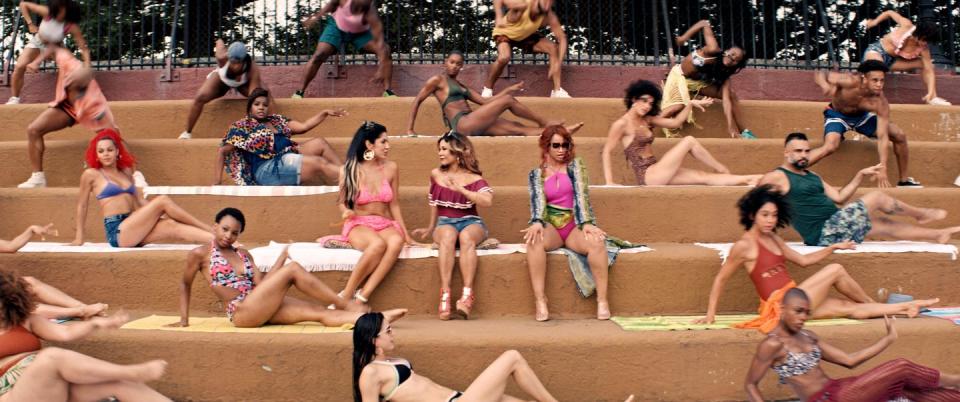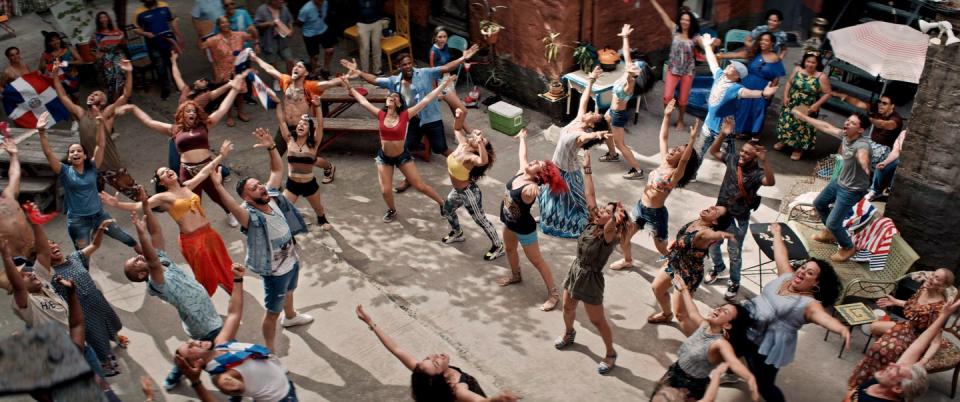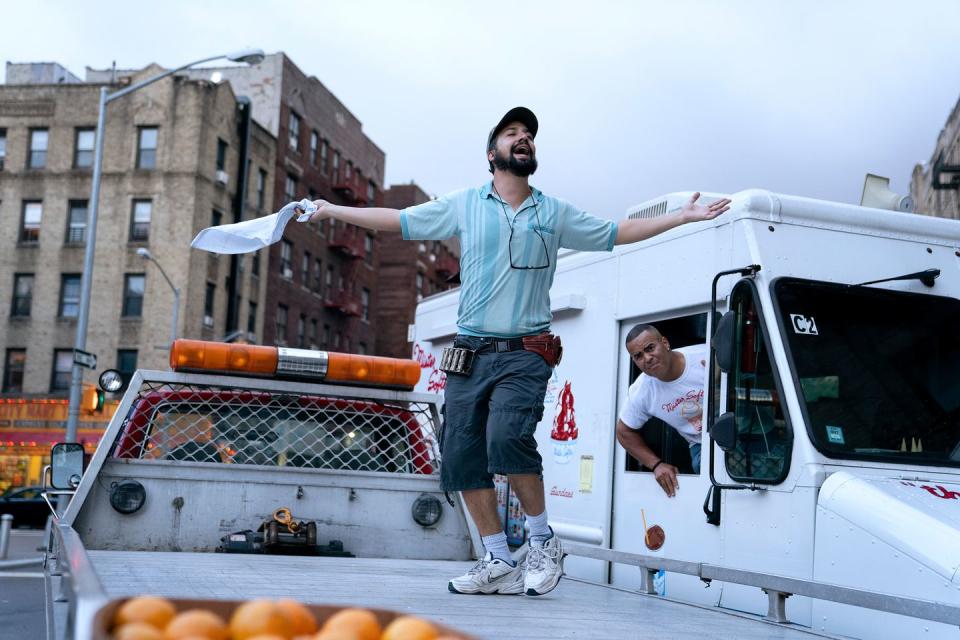The Moment Lin-Manuel Miranda Got Teary-Eyed on the In the Heights Set

If you're in need of a large, elaborate dance number, Christopher Scott is your guy. The three-time Emmy-nominated choreographer has worked with everyone from Selena Gomez to Miley Cyrus to Gloria Estefan. Most recently, Scott served as choreographer for In the Heights, the new film adaptation of the hit Lin-Manuel Miranda musical. Over the course of the movie, Scott's numbers, ranging from massive group dances to intimate duets, add bursts of energy to the production, without overshadowing Miranda's lyrics or stalling the flow of the film. In working with director Jon Chu and Miranda himself, Scott brought the musical to the big screen, but in a distinctly new way.
In the Heights premiered on Thursday, June 10, on both HBO Max and in theaters across the nation. Before the movie's opening, T&C chatted with Scott about his inspirations for the film's choreography, working with Miranda, and the pure mechanics of orchestrating a production of this scale and complexity. Read the full conversation below:

The musical number "96,000" (set in and around a large pool) is one of the most complex scenes in the movie—what was your strategy there?
There were a lot of challenges in this movie, because it's such a massive undertaking and there's so much music; there's so much detail to fill in. But, that number was by far the most challenging. One, just the scale of the pool—I had never even seen a pool that big. So, then there was a moment where we were thinking, can we even pull this off? Because we can't shoot in a pool and have it look empty—you need thousands of people to fill this up.
[In the movie] it looks like the hottest day of the year, but it was freezing in that pool. So, temperature-wise, we had a challenge. There was a moment where the dancers had to get out of the pool and some of them [said], "we can keep going" and other ones [said] "I can't keep going." You have to listen to those dancers and when they tell you, "we've got to get out of the pool," you have to get out the pool. It doesn't matter how much time you don't have—now we're talking about safety.

And then, time, because it's such an ambitious number. One of my favorite parts of the song is when everybody breaks into their own dreams and it becomes this mash-up of Benny's dreams, Vanessa talking about her dreams, everybody's dreams. But now, you’ve got to shoot everybody's moment for, ultimately, the same space of music. If the musical number’s five to seven minutes, we shot 30 minutes of a musical number that we could have put in there. It's really that long.
So, that was challenging, and then just the element of water. I had worked in it before, but this was different. When the scale gets bigger, there's more elements. It's different when you take your underwater camera and you're experimenting, because now you have [cinematographer] Alice Brooks with her techno-crane that's going to shoot underwater, and it's not the same as holding an iPhone. So, you have got to adjust and adjusting underwater is challenging. We didn't have the luxury of a month to shoot this number, like a big sci-fi movie might have. But John Chu, Alice Brooks, and myself, we’ve always kind of been like that: overly ambitious, completely trusting in our process; we have each other's backs. As challenging as it was, we always had this feeling of, well, this is like what it was when we did our little web series, The LXD [The Legion of Extraordinary Dancers], for zero money. The process hasn't changed no matter how difficult or big the scale gets, it’s ultimately just the same thing.

How did you approach a production with this large of a scale?
It's the same way you approach everything. You let the music tell you what to do to some extent. Typically, my process is, I'll just play the song on repeat while doing daily stuff. Really, at five dancers or 90—it gets a bit more challenging to manage the 90—but it's still the same amount of space that you have to fill.
One of the biggest challenges was casting that many dancers, because it just took so much time, especially when you want them to look like real people. Because dancers sometimes look like dancers—trained, professional dancers. We just knew that that couldn't be this movie. We needed to get the community; we need to get all shapes and sizes to represent what a real neighborhood looks like. So, I'll say that was probably one of the most challenging parts other than the water element. And then from there, it's just a bigger playground, but you just play the same way.

With [the musical number, "Carnaval del Barrio"], for example, this is a number built around generations. So, we have to get the older generation, but it's hard to find them because they don't have agents. Nobody's casting them to dance in musicals. So, that's where Eddie Torres Jr., who was the associate choreographer and worked on all the Latin styles in the film [would come in]. I was constantly like, “Eddie, I need more elders. We need the community.” And he'd be like, “I'm trying, I'm asking my aunt, I got my uncles looking.” And he was just scouring New York for the people.
What impact did Lin-Manuel Miranda have on the choreography?
He was so gracious in letting us create from a blank slate. That was my biggest thing—this wasn't just a project that some guy created. This was personal to Lin. And you knew that when you were on set, because he's telling you stories about it. We were rehearsing at the park for Nina and Benny's first duet in the film and he showed up at rehearsal, and I'm in the middle of rehearsing and somebody was like, “Lin’s here! Everybody pull up.” But [Miranda says], “No, no, no don’t worry about it. Don't worry, I'm just here with my wife. We're just walking. I live down the street.” And we’re like, “Oh, okay.” And he's like, “You know, this was where I took my wife, Vanessa, for our first date.”

And then he's there and he's watching the rehearsal and you see a tear drop out of his eye, and you're like, “Oh, that's what this is. That's what we're doing.” This means something to Lin—this is important. He was super supportive, super nurturing for the vision, and he would just show up. When I first got the job, [scheduling would say] you’ve only got this two-week window with [Miranda], because then he's leaving; he's not going be around for production. I don't know what happened, but that changed. Lin was there every single day, guiding, helping, giving little tidbits. He almost works from a place of, “I'm going to encourage you without you even knowing that I'm encouraging you. I'm going to give you this little tidbit and now and you're going to take it and it’s going to find its way in the movie.” So, he was the inspiration. The reality of it is, Lin just finds those ways to inspire you without you even knowing that it's happening.
What else inspired you for this production?
It all comes back to Lin's inspiration, which was the neighborhood. You walk around that place and you can't understand it until you’re living it. Vanessa's character, when she walks and she sees construction blocked off with the pink ribbon and she takes that as inspiration with the paint—that was how we felt every single day. You're walking around Washington Heights, [if] you want to create the number at the park—go sit at the park for a few hours and come up with the number. It was that simple. We're doing the opening number? Well, let's go sit out there and see what the opening number feels like.
You Might Also Like


